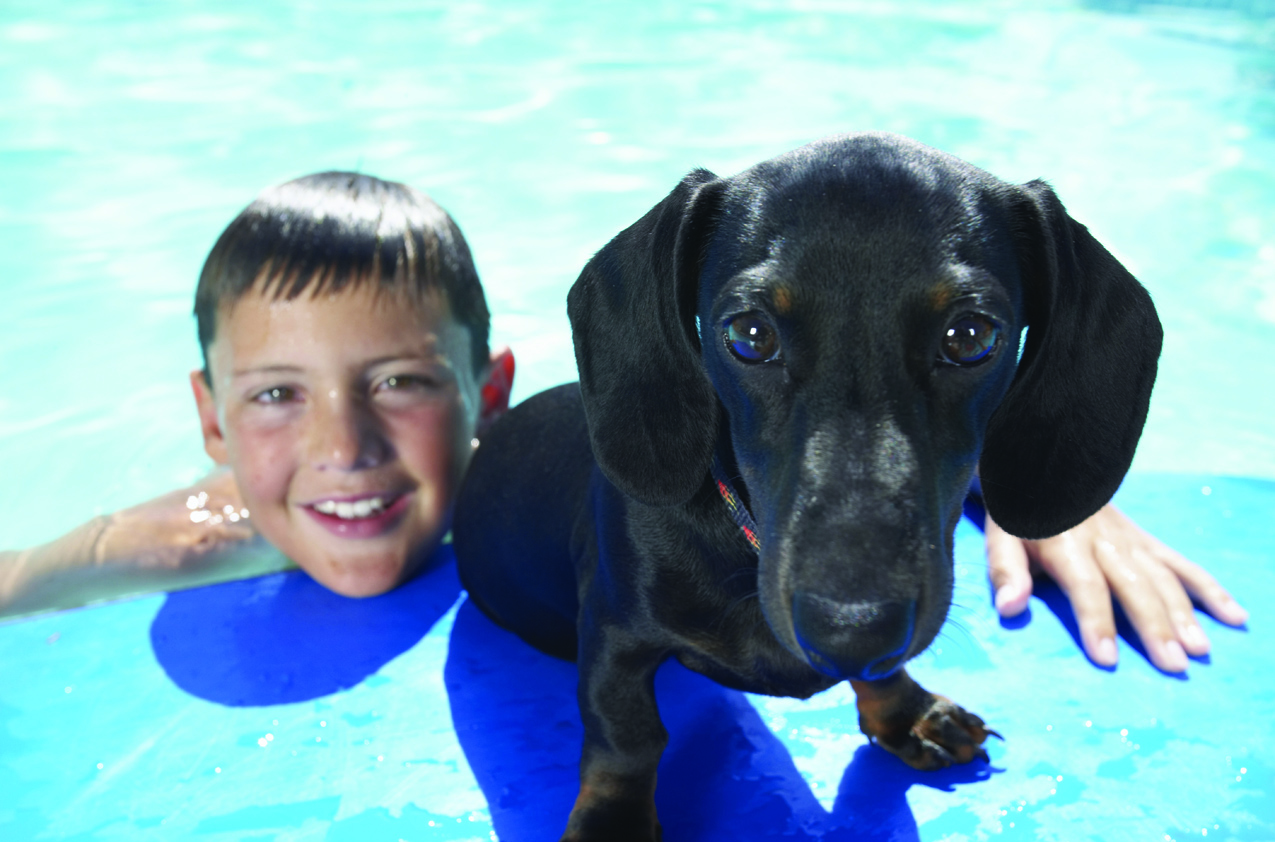The Valley Chronicle - Do all dogs love to swim?ng
Do all dogs love to swim?
·
3 min read
[caption id="attachment_16962" align="aligncenter" width="1275"] Metro Service
Metro Service
Water and dogs may seem like a natural fit, but individuals should test their dogs’ swimming abilities and exercise precaution whenever their pets are around water.[/caption] Dogs have solidified their places in many families. Nowadays, more and more dogs accompany their pet parents on trips to the store, vacations and various recreational pursuits - including trips to the lake, beach or the backyard pool. Many people assume all dogs can swim and swim well. But AnimalPlanet.com advises, “When it comes to swimming, canines generally fall into one of three categories. There are those that can swim, those that can be taught to swim and those that should steer clear of all aqueous environments.” Unfortunately, there’s no way to gauge a dog’s swimming prowess until the animal is introduced to water. That’s one reason why dog owners must make water safety a priority when taking their pets near water. Introducing water Make dogs feel comfortable in the water by gradually introducing them to it. Start in an area that can be controlled, for example, a kiddie swimming pool. That’s shallow enough to help dogs if they struggle. Show the dog that the water can be enjoyable. Get in with the dog and let him or her get acclimated to the feeling of water on its paws. Let your pet set the pace, being certain not to force the issue. If you’re at the lake or a beach, throw a stick progressively farther from the shore. This can help the dog incrementally adapt to the feeling of deeper water. Tossing your dog into the water or submerging his head can be traumatic. Recognizing poor swimmers Dogs that have large bodies and short legs often do not swim for fun. American Bulldogs, for example, may not be as skilled or as enthusiastic about swimming as Labradors. If your dog gives you a hard time about swimming or struggles to stay afloat, you may not be able to share laps together. Instead, carefully watch him or her around the water to prevent accidents should your pet wander in. Watching for currents At the beach, the same currents and riptides that can pose a threat to humans can threaten dogs. Even strong swimmers can be affected in rough surf, and dogs may not have the intellect to escape currents, so it’s best to avoid the situation. Washed-up fish and seawater also can be threatening to dogs. Dogs may be enticed by the smell of dead fish, but become ill if they consume decomposing marine life. The same is said for drinking seawater. Bring fresh water along to quench your dog’s thirst so he or she will not be tempted to lap up the saltwater. As you may have already learned, dogs also love to roll in smelly things and dead fish are definitely smelly, so be extra sharp and stop them before they get started. Life preservers Dogs riding in boats should be fitted with canine life preservers. These will help dogs stay afloat should they fall in the water, while also making dogs more visible in the water. Water and dogs may seem like a natural fit, but individuals should test their dogs’ swimming abilities and exercise precaution whenever their pets are around water. -Metro Service
 Metro Service
Metro ServiceWater and dogs may seem like a natural fit, but individuals should test their dogs’ swimming abilities and exercise precaution whenever their pets are around water.[/caption] Dogs have solidified their places in many families. Nowadays, more and more dogs accompany their pet parents on trips to the store, vacations and various recreational pursuits - including trips to the lake, beach or the backyard pool. Many people assume all dogs can swim and swim well. But AnimalPlanet.com advises, “When it comes to swimming, canines generally fall into one of three categories. There are those that can swim, those that can be taught to swim and those that should steer clear of all aqueous environments.” Unfortunately, there’s no way to gauge a dog’s swimming prowess until the animal is introduced to water. That’s one reason why dog owners must make water safety a priority when taking their pets near water. Introducing water Make dogs feel comfortable in the water by gradually introducing them to it. Start in an area that can be controlled, for example, a kiddie swimming pool. That’s shallow enough to help dogs if they struggle. Show the dog that the water can be enjoyable. Get in with the dog and let him or her get acclimated to the feeling of water on its paws. Let your pet set the pace, being certain not to force the issue. If you’re at the lake or a beach, throw a stick progressively farther from the shore. This can help the dog incrementally adapt to the feeling of deeper water. Tossing your dog into the water or submerging his head can be traumatic. Recognizing poor swimmers Dogs that have large bodies and short legs often do not swim for fun. American Bulldogs, for example, may not be as skilled or as enthusiastic about swimming as Labradors. If your dog gives you a hard time about swimming or struggles to stay afloat, you may not be able to share laps together. Instead, carefully watch him or her around the water to prevent accidents should your pet wander in. Watching for currents At the beach, the same currents and riptides that can pose a threat to humans can threaten dogs. Even strong swimmers can be affected in rough surf, and dogs may not have the intellect to escape currents, so it’s best to avoid the situation. Washed-up fish and seawater also can be threatening to dogs. Dogs may be enticed by the smell of dead fish, but become ill if they consume decomposing marine life. The same is said for drinking seawater. Bring fresh water along to quench your dog’s thirst so he or she will not be tempted to lap up the saltwater. As you may have already learned, dogs also love to roll in smelly things and dead fish are definitely smelly, so be extra sharp and stop them before they get started. Life preservers Dogs riding in boats should be fitted with canine life preservers. These will help dogs stay afloat should they fall in the water, while also making dogs more visible in the water. Water and dogs may seem like a natural fit, but individuals should test their dogs’ swimming abilities and exercise precaution whenever their pets are around water. -Metro Service
S
